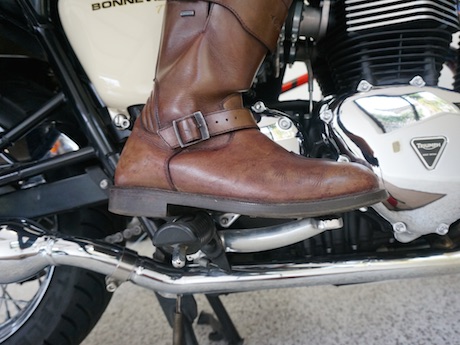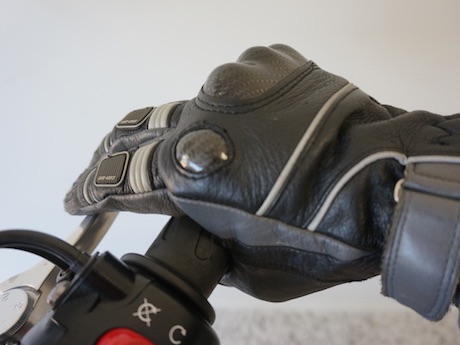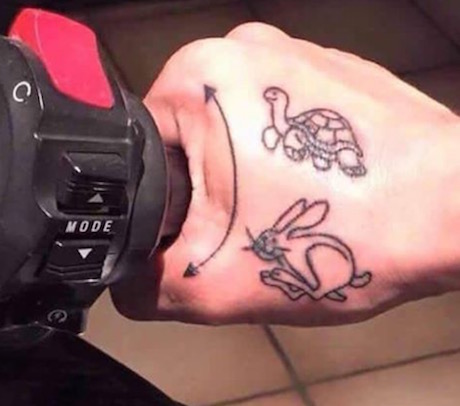If you are riding in a situation of concern, do you cover your brakes – that is, do you hold your hand and foot over the brake levers?
There are arguments for and against covering your brakes.
In any reference in this article to covering your front brake, we are talking about only using one or two fingers while the rest remain around the throttle as in the top photo.
Reaction times
The notion of covering your brakes is that it reduces vital reaction time for applying the brakes.
Some riding schools instruct their students to never cover their brakes, saying it causes panic stops and crashes.
They say the millisecond lost from uncurling your fingers from the throttle to apply the brakes makes no difference.
However, any faster reaction time on a brake could save several metres in stopping distance.
That could be the difference between hitting something or not.
There is also the argument that you can brake harder with four fingers than two.
Try it yourself. If your brake lever is so heavy you need four fingers to apply full force, perhaps your brake cable need some attention.
Most modern hydraulic brakes don’t need an Iron Man to apply them.
Total control
Some instructors say that covering your brake also reduces your throttle and handlebar control.
But you shouldn’t be throttling the throttle anyway. Your thumb and third and fourth finger are enough to maintain control.
Using one or two fingers to apply the front brake also allows you to use the throttle to match engine speed with ground speed on downshifts.
This prevents dangerous rear wheel lock-up.
Click here for more on holding the throttle.
Cover for caution
Situations where you should think about covering your brakes are:
- In heavy traffic where anything can happen such as sudden lane changes or traffic coming to a halt, even on a highway;
- riding through suburban streets where cars may not see you and pull out in front of you from an intersection;
- riding down a country road where you expect a kangaroo, deer or other fauna to suddenly appear from the bushes; and
- when you perceive an erratic driver in traffic who you suspect may suddenly do something stupid.
You may think of other situations as well where this approach is necessary.

Rear brake
Your foot should always be hovering over the foot brake lever in road riding, anyhow.
Click here for more on where your foot should be.
Rather than just hovering your hand and foot over the levers, you should also think about engaging the lever a little bit to switch on the rear brake light in some situations.
This does not apply the brakes, only switches on the light.
This is a handy warning device for motorists who are following you.
It is also a trick you can deploy to make tailgaters back off a little bit.
In fact, rapidly engaging and disengaging this switch will catch the attention of the motorist behind you who will see your brake lights flicking on and off.
-
When do you cover your brakes and has it saved you from a crash? Leave your comments below.



